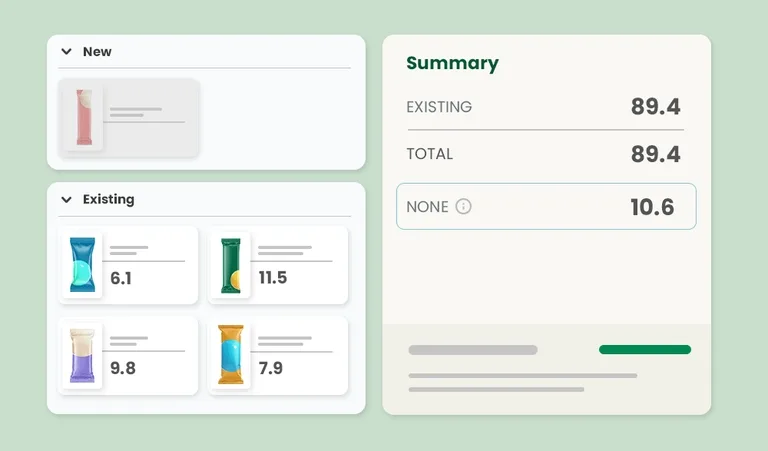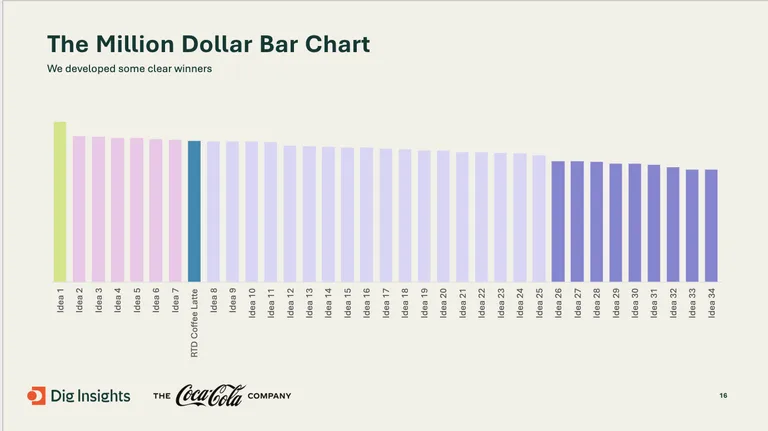What is Agile Market Research?
Agile market research is an iterative approach to testing concepts products with consumers. Unlike traditional research, which is often slow and linear, agile research emphasizes speed, flexibility, and ongoing feedback.
The term “agile” comes from software development and SaaS, where teams test code in short cycles (sprints), gather user feedback, and release improved versions quickly. Market researchers borrowed this philosophy and applied it to consumer insights. Instead of waiting months for results, agile research allows brands to test ideas early and often, refining them along the way.
Agile research is all about launching better products. You learn from consumers through testing, adapt by optimizing your concepts, and move forward with additional iterations. By ensuring your research helps you launch the best version of your prioritized ideas, you maximize your return on investment.
Patrick Lambert
SVP of Customer Success and Commercial Intelligence at Dig Insights
Explore how agile research drives business innovation.
Benefits of Agile Market Research
Agile market research and agile concept testing offer clear advantages for innovation teams.
1. Faster insights
Traditional research projects can take months to complete, from study design to data analysis. Agile methods streamline this process, enabling researchers to design, launch, and gather insights in a fraction of the time. Faster feedback means businesses can respond quickly to market changes, consumer preferences, and emerging trends.
For example: If a new trend appeared in the food & beverage space, agile market research can quickly reveal consumer preferences and validate new product ideas before heavy investment. This agility minimizes the risk of investing resources into concepts that may not resonate with the target audience, enhancing the chances of launching successful products.
2. Iterative improvement
Instead of betting everything on a single large study, agile methodologies encourage ongoing refinement based on real-time insights. You can test early concepts, learn from feedback, and optimize designs in multiple rounds.
For instance: Rather than testing hundreds of packaging designs in one big study, you can run smaller agile tests that narrow down options step by step. So ultimately you’re producing stronger designs with less risk.
3. Customer-centric focus
Agile research keeps consumers involved at multiple stages of the innovation process. By continuously validating ideas with your audience, you ensure concepts stay aligned with real needs and preferences. This customer-centric approach \not only produces better products but also builds stronger customer loyalty and engagement.
Agile Market Research Process (Step-by-Step)
We’ve created our own step-by-step process of doing market research the agile way. And it boils down to just these 3 letters:
- P – Prioritize winning ideas earlier
- O – Optimize strong ideas using consumer feedback
- V – Validate potential for incrementality
This approach ensures you’re not just moving fast—you’re moving in the right direction.
Our Customer Experience team did a great job explaining each step of this process in our event:
Tools for Agile Market Research
Modern research platforms make agile research practical and scalable. Our agile innovation testing platform, Upsiide, was built specifically for agile testing and offers several tools to support each stage of the POV process.
Idea Screening
Idea Screening helps you prioritize ideas based on consumer feedback. Using a swiping interface inspired by social media, respondents quickly sort through ideas in a fun, game-like experience. Afterward, out-of-the-box dashboards help you identify which ideas deserve further testing.
Read more: The Upsiide Idea Screening Methodology

Idea Split
Idea Split is the tool you would use for optimizing solid ideas. This tool helps you identify why consumers feel the way they feel about your idea and measure the results against your business metrics. Idea Split can reveal insights about your idea’s strengths and weaknesses and even gauge people’s purchase intent.
Read more: How we used Upsiide’s Idea Split tool to identify the competitive landscape of the plant-based protein category
Market Simulator
The Market Simulator is the perfect tool to validate the potential for incrementality. Market Simulator can show where your new idea sources volume or steals share from, to what extent it increases or cannibalizes market share and how you can optimize your product portfolio.

Templates
Finally, our survey Templates are the backbone of agility. Users can turn their surveys into Templates in just a few clicks or use our prebuilt library of guides to create repeatable surveys and audiences.
The beauty of Templates is that they cut the time you might need to program a whole study from scratch and allow you to iterate studies as many times as you need. That’s what we call agile market research!
Read more: Faster Research with Flexible Survey Templates
Example of Agile Research in Action: Coca-Cola
The Coca-Cola Company provides a powerful example of how agile market research can accelerate innovation. In 2021, Coca-Cola embedded Upsiide as their gate zero innovation testing protocol, making agile research a standard step in their pipeline. Since then, more than 22,000 ideas have been tested across 44 countries by 168 Coca-Cola team members.
The Challenge
Coca-Cola wanted to develop ready-to-drink (RTD) coffee innovations across four key markets: the US, UK, Japan, and China. Historically, each region managed innovation separately, which slowed decision-making and made it harder to scale billion-dollar ideas globally. A more agile, connected approach was needed to empower teams across markets and align stakeholders on winning opportunities.
The Agile Solution
To tackle this challenge, Coca-Cola partnered with Dig Insights to design an innovation sprint powered by agile testing:
- Day 1: Reviewed existing category research to identify white space.
- Day 2: Generated 34 new RTD coffee ideas, which were immediately tested overnight using Upsiide. The tool compared each idea against Coca-Cola’s benchmark for RTD coffee, delivering rapid, region-specific insights.
- Day 3: Stakeholders from marketing, research, finance, and legal walked into the workshop with actionable results in hand. Instead of debating opinions, the team prioritized concepts based on agile consumer data collected just hours earlier.
This overnight feedback loop is the essence of agile market research, quickly testing, learning, and refining ideas in real time.
The Outcome

By testing 34 ideas across four markets overnight, Coca-Cola saved six months of back-and-forth development and avoided costly delays. The results identified seven high-potential innovations that exceeded benchmarks and were prioritized for development, representing millions in incremental growth potential.
“Instead of wasting another 6 months of productivity, which would have cost us a million dollars, we saved 6 months of back and forth.
And stakeholders saw $$$ in their eyeballs. You’re only as good as the decisions that get made. As an insights person, I was able to add so much value to the business and insert myself into the most important strategic innovation decisions.”
Billy Fletcher
Global Director of Human Insights, Coca-Cola Company
Conclusion: Why Agile Market Research Matters
Agile market research combines speed, flexibility, and consumer focus to help brands innovate faster and smarter. Whether you’re testing claims, packaging, or entirely new product ideas, agile insights reduce risk and increase your chances of market success.
About the Author
This article was written in collaboration with Patrick Lambert, SVP of Customer Success and Commercial Intelligence at Dig Insights. With over 15 years of experience in Insights and Analytics, Patrick is a strategic research consultant with deep expertise in agile market research and innovation. Patrick’s background includes senior roles at Nielsen in Retail Services, Client Development, and BASES, where he advised Fortune 500 brands on innovation strategy and product development.